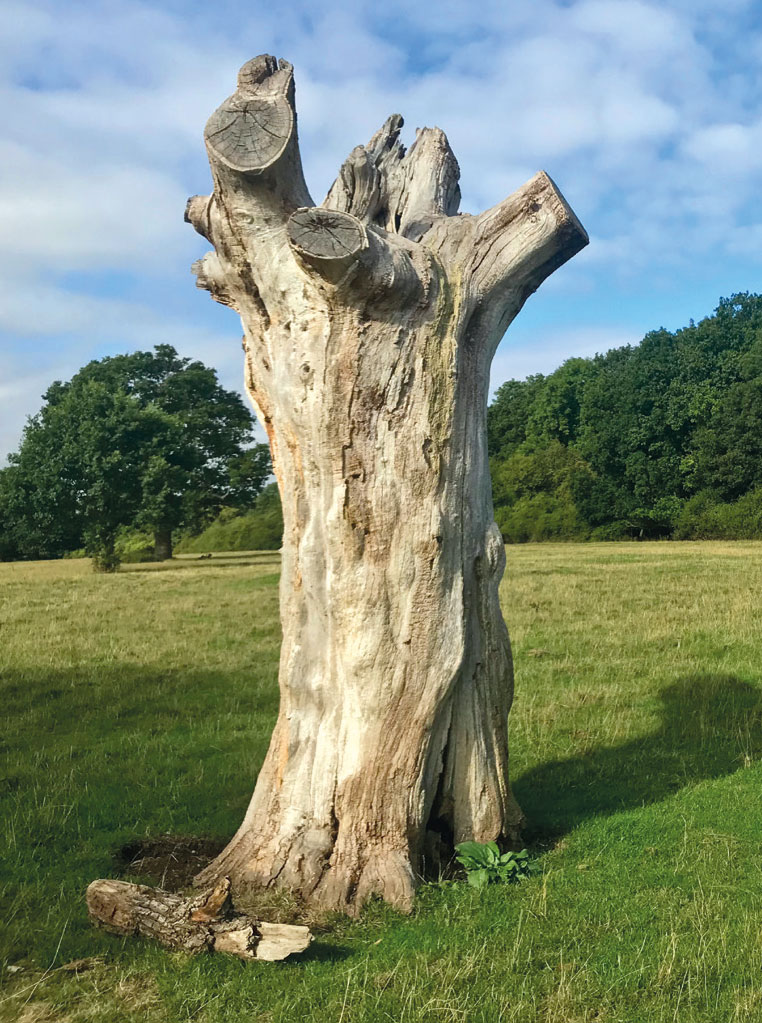
Trees which were re-pollarded in one go often died. This practice ceased in the late 1970s.
For the last 20 years I've been incredibly lucky to be able to work at a number of the country's top veteran tree sites. These include the National Trust's Hatfield Forest in Essex, where I have been involved with experimental pruning work to the large population of veteran lapsed pollards.
Hatfield Forest 1s the only remaining intact Royal Hunting Forest in the UK and dates from the time of the Norman Kings. In the words of the late Professor Oliver Rackham,
'It is of supreme interest ... and is almost certainly unique in England and possibly the world ... and is the only place where one can step back into the Middle Ages to see, with only a small effort of the imagination, what a Forest looked like in use.'
My company, Urban Forestry, was originally invited to work there after at tending a course run by the property manager, Vikki Bengtsson. The course was an introduction to new ideas around pruning old trees, which had been developed because so many of the old pollards were failing biomechanically, with a significant number of those dying as a result. The National Trust recognised that this was a problem in the late 1970s and commenced a programme of repollarding trees, some of which hadn't been cut for 150-200 years. The cutting work involved removing the whole of the lapsed crown back to the baling. Initially it appeared to have some success as the trees started to regrow. However, after a few years large numbers of these trees started to die and the decision was made to cease this work.
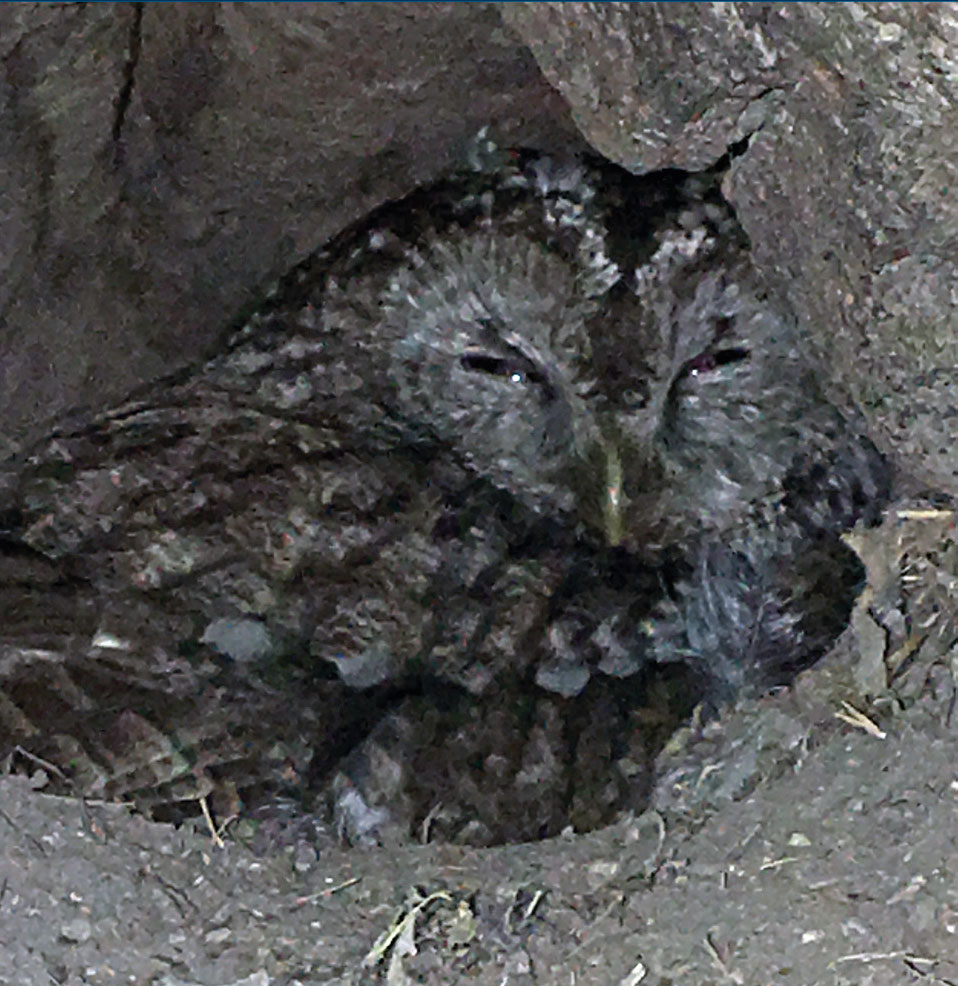
Removing the lapsed crown via retrenchment pruning could have a large impact on the biodiversity associated with tree.
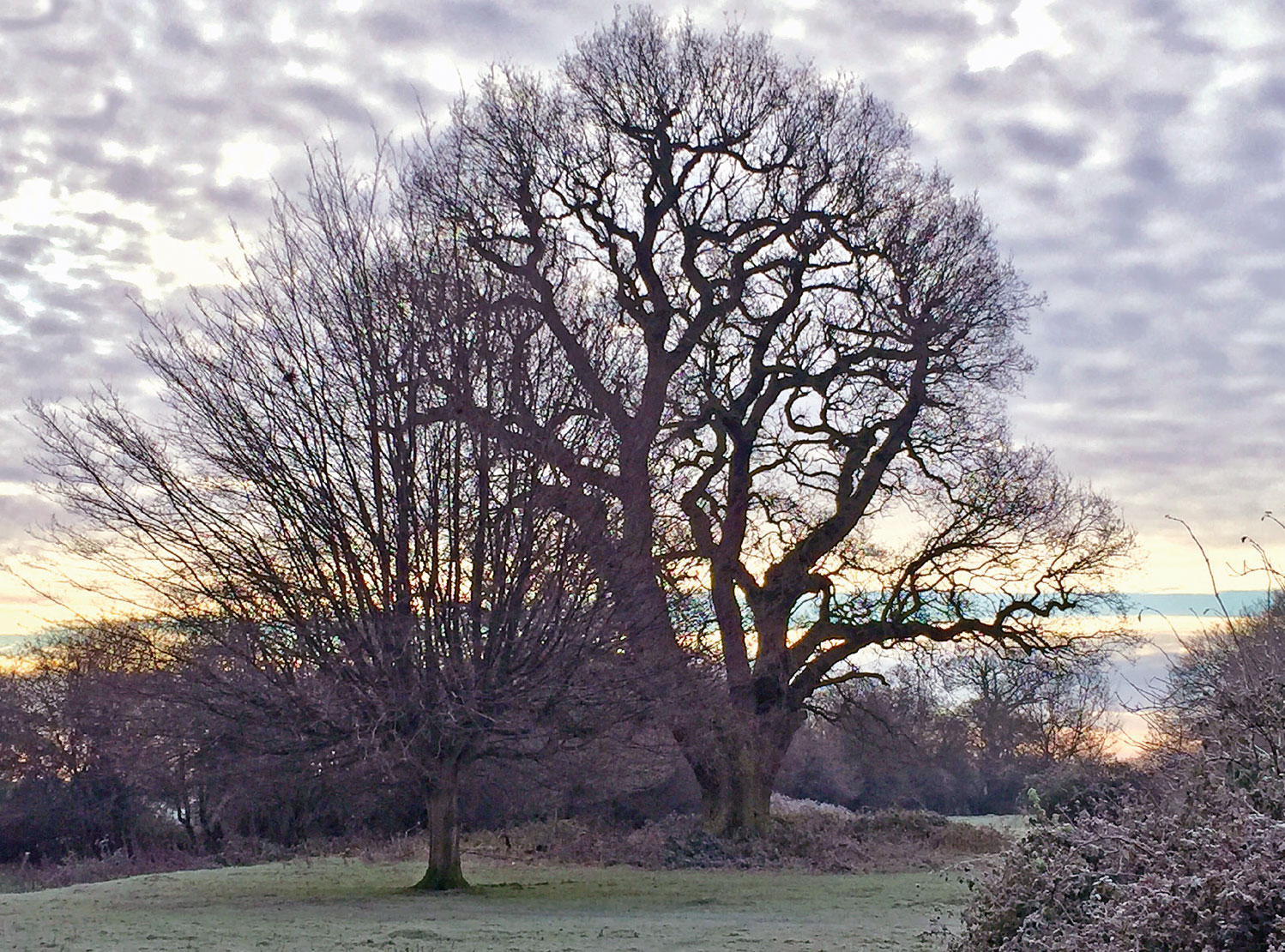
Lapsed oak pollard after two retrenchment cuts. Notice all the regrowth is on the ends of the branches, potentially starving the inner crown of light.
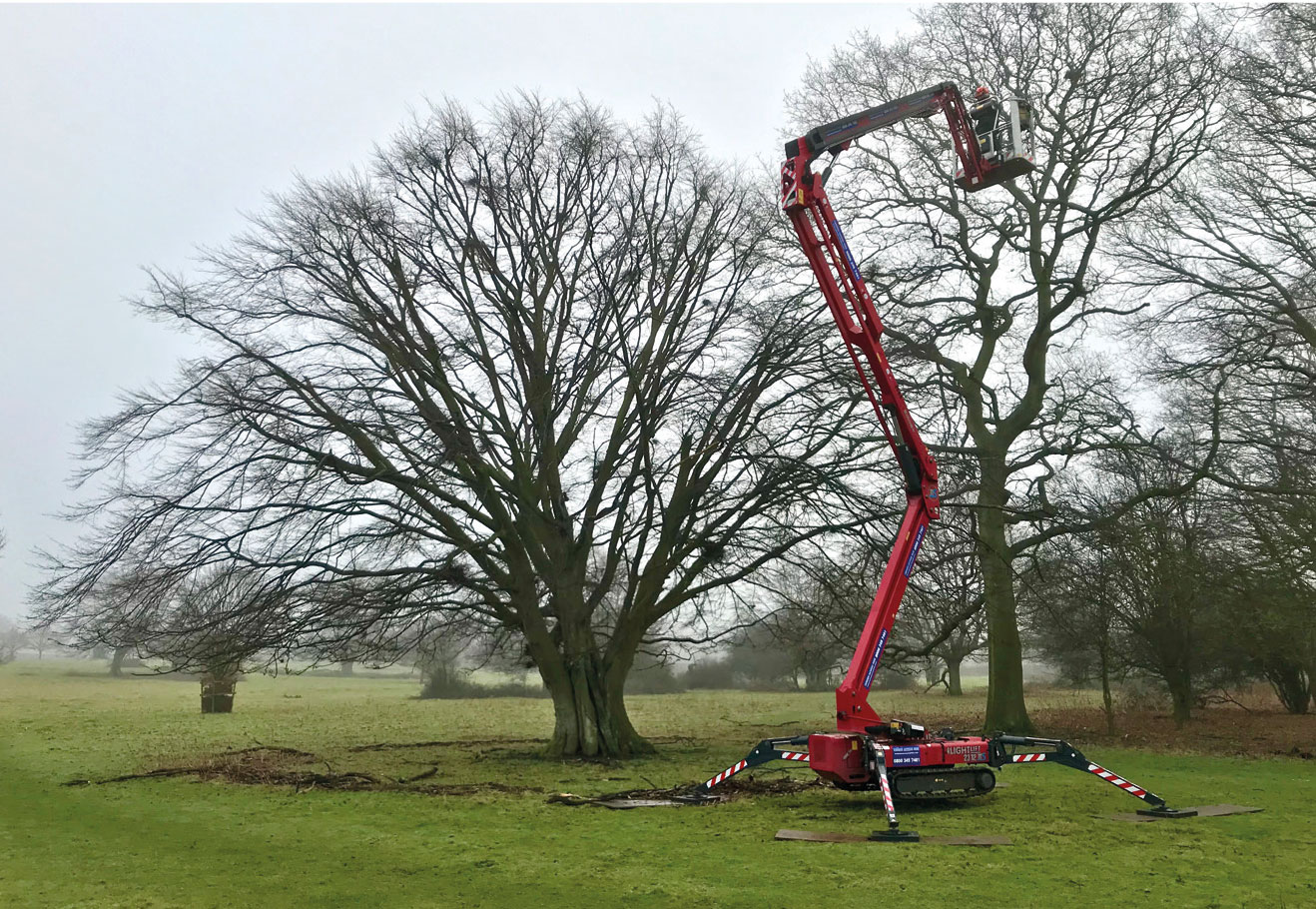
Lapsed hornbeam just about to be retrenchment pruned for the third time.
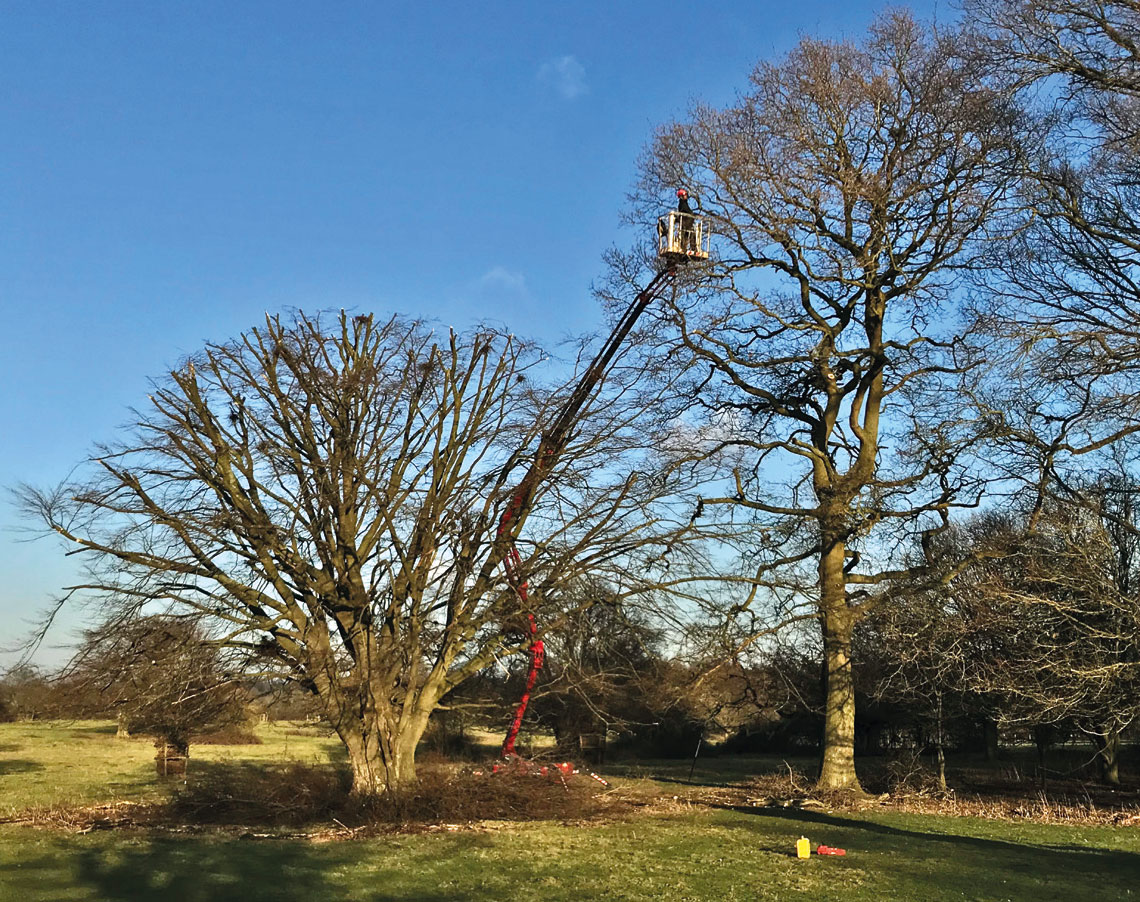
Third retrenchment cut nearly complete. This tree is scheduled to be cut one more time, down to 2m above the boling.
The formation of the ATF and crown retrenchment pruning
It was around this time that the Ancient Tree Forum (ATF) was formed. How best to preserve lapsed pollards, through pruning, halo releasing and other forms of management, was regularly debated at the first meetings (and still is). Neville Fay was one of the founding members of the ATF and his practice, Treework Environmental, was commissioned by the National Trust to survey and plot the trees at Hatfield, and to devise a new method of managing the trees by providing individual management plans for each one.
Nevllle devised a method of pruning the trees in a way which mimicked how he saw old trees natural ly retrenching. This is where the crown of the tree very gradually dies back, often over decades, forming a smaller and lower secondary crown. If the tree has good vitality, the secondary crown can develop and in some cases will even eventually overtake the retrenched crown. Neville's idea was to reduce the crown of the lapsed pollards four times, approximately every seven years, over a 30-year period. Planning tree management operations over this timescale was ground-breaking at the time. Following this approach, each time the crown was reduced the pruning points would be a few metres lower than where it had been cut before, the ultimate aim being to get the crown down to a point approximately 2-3 metres above the boling, reducing the likelihood that the tree would fail mechanically.
This cutting is different from a conventional crown reduction, as the pruning points are internodal, or in other words, the reduction cuts are left as stubs. From these stub ends you tend to get lots of new frithy growth (dependent on species, vitality and presence of dormant buds), and it was thought that this growth can be 'pushed back down' the branch which has been reduced. The theory was that, over time, the repeated cutting will encourage the development of a lower crown so that when the tree is on its fourth, and final, cut, this lower crown can develop to form the new crown of the tree. This crown can then go on to be managed cyclically as a pollard again.
With the individual management plans completed, the phased retrenchment pruning regime started in the early part of this century. The work was tendered out to a collective of conservation-minded arboricultural contractors, all of whom had attended the course run by Vikki Bengtsson.
The results of crown retrenchment pruning
Fast forward nearly two decades and we are now at a point at Hatfield where we are starting to cut some of the trees for the third time. it is an interesting period, especially as we have had time to observe the outcomes from the previous reduction work.
lt's my experience that this work doesn't appear to be forcing the trees to 'grow down'. The bushy growth on the stubs instead of descending down the cut branch is in fact growing up towards the light on the ends of the branches. This isn't surprising, considering how blunt the reduction is and how much light is let in. This growth tends to grow like a thick thatch and from my observations, instead of allowing light to the lower sections of the crown and boling, it may actually be starving the centre of the tree of light, potentially hindering the development of the secondary, lower crown.
It is also possible that this growth, due to its thick nature, may now be more prone to catching the wind during extreme weather events.
This poses the risk of loading the parent branch to a point where it may fail, especially if there is decaying wood at the point where it is attached to the baling. An additional consideration when managing oak is that this growth can also be prone to being affected by powdery mildew (Erisyphe alphitoides and E. quercicola). These fungi are particularly damaging to the lammas leaves on oak, giving them a white powdery covering. Among other damaging effects of these fungi, the fungal mycelium causes constant evaporation of water that would normally be regulated by the leaves' stomata, thereby exacerbating the impacts of dry summers. This can kill branches, and in some cases after repeated attacks may weaken the tree so much it can lead to its death (usually from an additional secondary infection).
All of this has led me to wonder whether it's possible to force a tree to 'grow downwards' mimicking what we see old trees doing naturally.
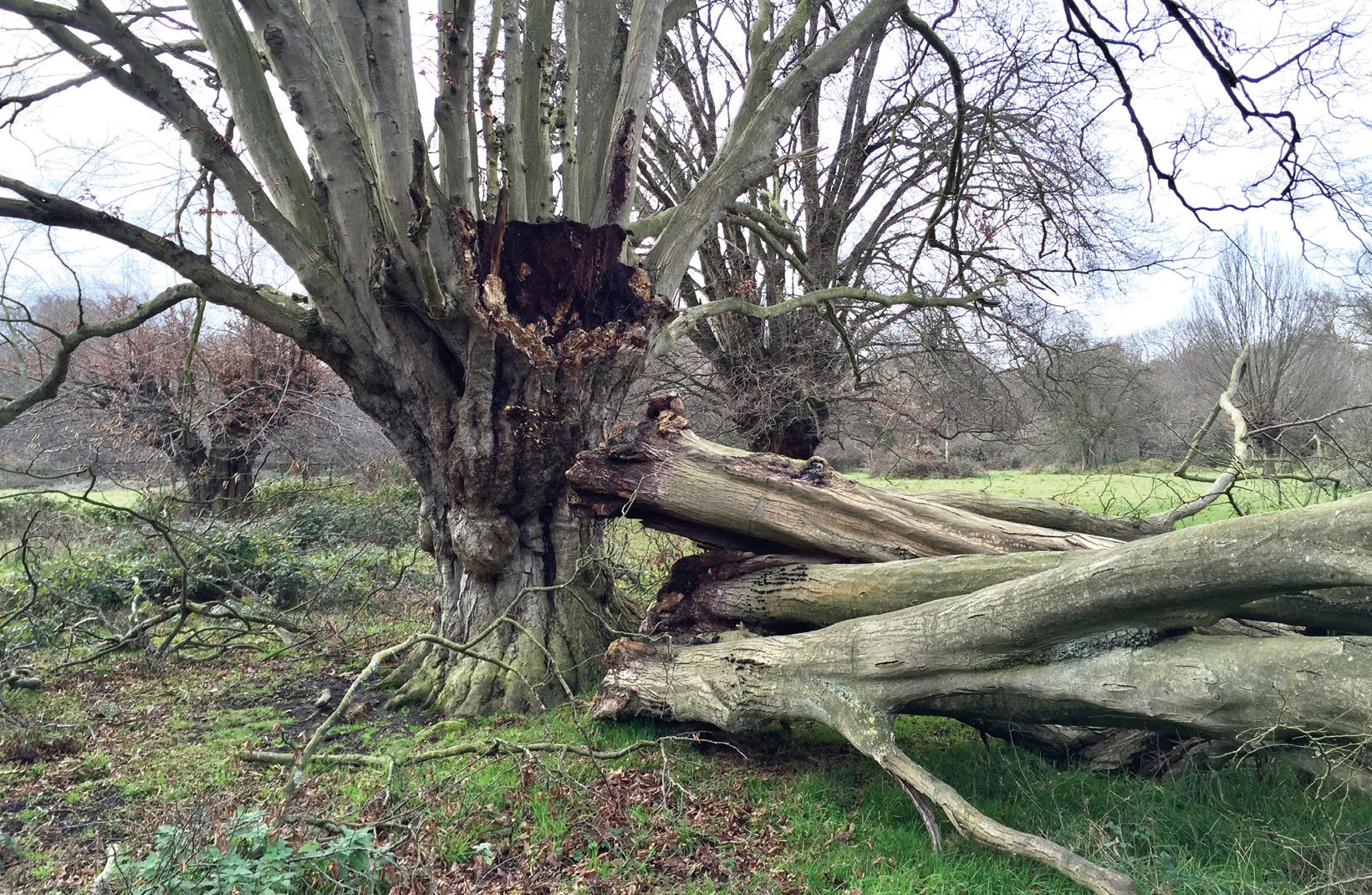
Lapsed pollards are prone to biomechanical failure if left uncut.
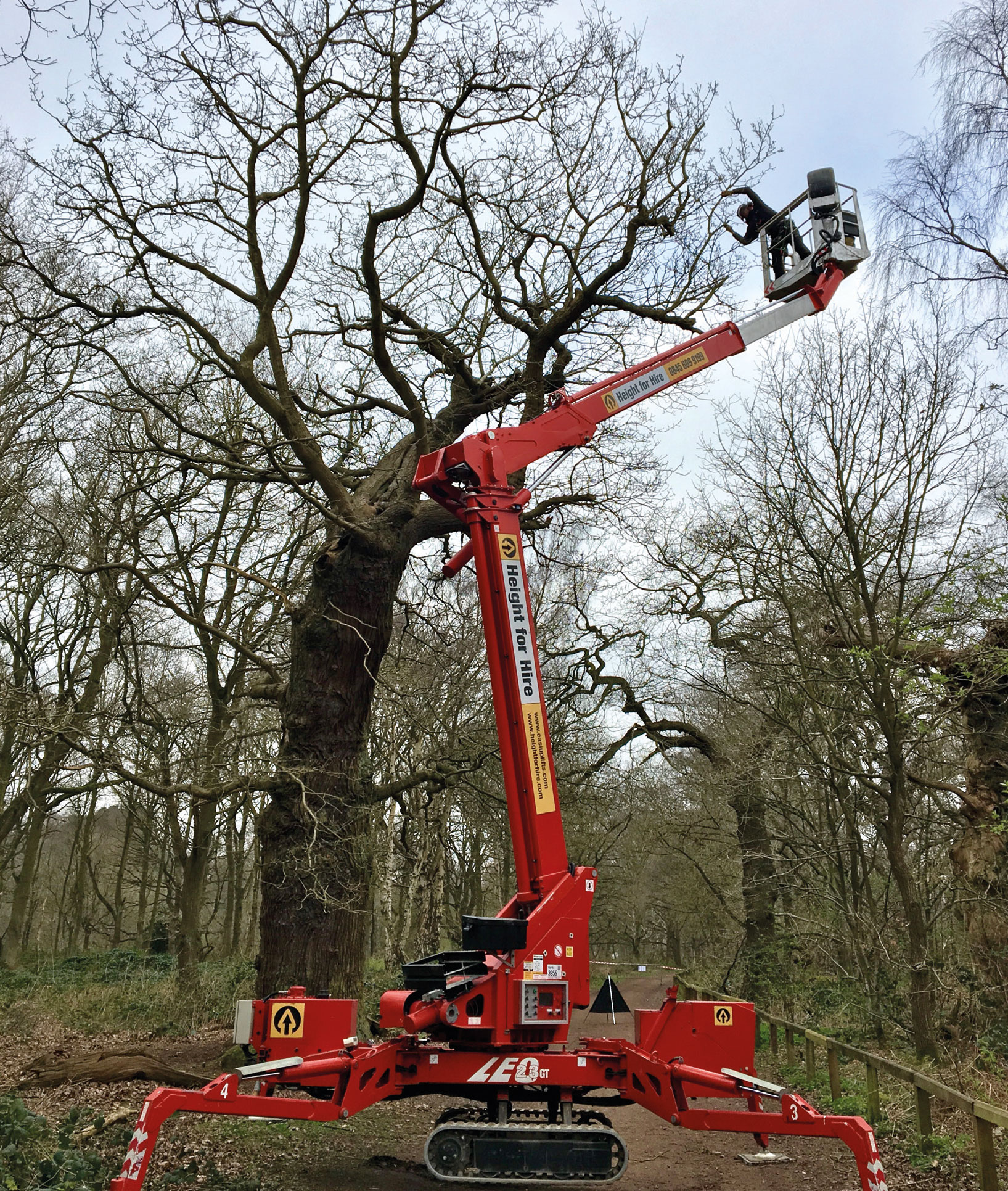
Using the reduction via thinning technique at Sherwood Forest. Perhaps an option instead of retrenchment pruning?
Are we removing too much material?
In addition to the above, I have further reservations about the crown retrenchment pruning. To achieve the intended objective of a new crown that is 2-3m above the boling, I estimate we have to reduce the volume of crown by approximately 30-40% during each reduction. This percentage may even greater in the third and fourth phases, depending on the amount the tree has grown between cuts. After almost 20 years of managing these trees I'm starting to get nervous about this. By making such drastic cuts, are we aerating fungi latent within the tree, which may in turn increase or speed up the decay process? A reduction of this size isn't something most good arborists would undertake in conventional arboriculture, so I'm questioning why we are doing it in veteran tree work, especially as the trees are some UK's oldest and possibly most vulnerable.
Another concern I have is, as we gradually make the crown smaller and smaller, the branches we are removing start to become much larger. lt is in these branches, including the scaffold limbs and the upper crown trunk wood, where we find lots of the habitat features commonly associated with veteran trees- for example, deadwood, hollowing limbs, tear out wounds, hazard beams, cracks, splits, rot pockets, and flaking bark. These features (and others) are widely recognised as supporting a large range of unique biodiversity, which we will have to cut off if we are to continue with the phased cutting programme. This cannot be desirable, and is completely at odds with the principles of environmental arboriculture.
A way forward?
I realise we do need to do something to stop the crowns from collapsing, but do we need to cut so much off, and could we do it in a way that retains as much of the biodiversity as possible? Perhaps a solution, and something we have been trialling at Sherwood Forest, is to selectively reduce the crown, by shortening long or over-extending limbs using a technique called reduction via thinning. Older arborists will know this also by the name of 'drop crotching'. This reduces the loading on the canopy, and can help reduce the likelihood of branch failure whilst at the same time keeping a lot more photosynthetic material. The upshot of this is a greater number of the veteran features and more of the biodiversity can be retained, and also a lot more of the tree's original aesthetic and beauty are preserved too.
The reason I think this technique might have a place in veteran tree work is it doesn't encourage re-growth. In fact I think it actually slightly inhibits new growth if you place the cuts accurately. This means you don't get fleshy new growth on the branch ends, which can be prone to disease, nor do you get the dense growth that can excessively load the branch making it more prone to failure.
If we were to consider this type of cutting as an alternative to retrenchment pruning, it would likely mean that the trees would have to be re-surveyed more regularly, and additional selective pruning may become necessary as the trees grow overtime. However, overall I think the tree work would probably be cheaper, and would mean we keep a larger amount of the biodiversity value whilst retaining the trees until they decide to retrench naturally on their own.
Over the winter of 2018/19 a group of arborists, consultants and ecologists who are involved in working with veteran trees are planning to meet to discuss retrenchment pruning, which is an exciting opportunity, and is likely to lead to some new guidance on the subject being published.
Reg Harris
Reg is Director of Urban Forestry (Bury St Edmunds) Ltd.
Article taken form Issue 183 of The ARB Magazine. Members can view their copy here.